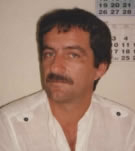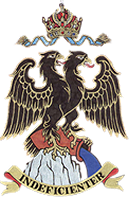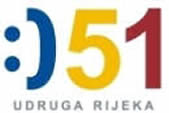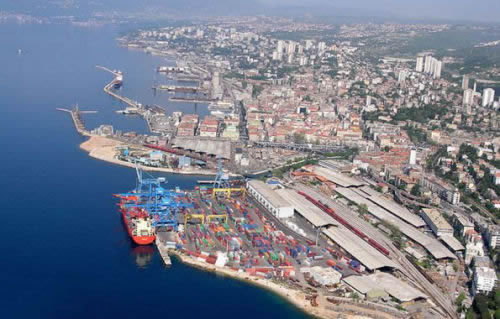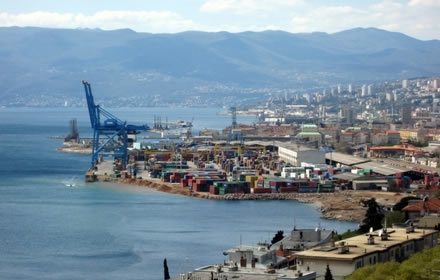| Fiume | Rijeka | قهتثنش | Մըտսհա | हऎचउछऔ | კშრუოფ | Ριξεκα | רןחקלש | すにまいのち | すにまいのち꺄ᅥ담 | Рийекa | ஈகராகோ | को नदी | ฑร่ำาฟ |
| Italian | English | Arabic | Armenian | Devnagari | Georgian | Greek | Hebrew | Japanese | Korean | Russian | Tamil | Hindu | Thai |
| Binary: 010100100110100101101010011001010110101101100001 |
ASCII:
82 105 106 101 107 97 |
Hexadecimal: 52 69 6a 65 6b 61 |
Octal: 0122 0151 0152 0145 0153 0141 |
Morse: .-. .. .--- . -.- .- |
|||||||||
Rijeka, my hometown
My English speaking friends can visit following the sites written on English to find more about Rijeka. Included are some sites to get you general knowledge, history of the Rijeka, maps, and the official Rijeka home page written on English.
Wikipedija on Rijeka, and on Football club "Rijeka"
Rijeka travel guide – wikitravel
Accommodation in Rijeka
Rijeka - Sunrise, sunset, dawn and dusk times, table for whole year
Rijeka Carnival
About racing history in my town and surroundings
They are all informative, and you can find all interesting data about my hometown there.
Location of Rijeka within Croatia |
|
Total rainfall: 1530 mm p/y, with about 128 rainy days |
|
Average humidity throughout the year: 58% |
|
Average annual temperature: 14,1° C |
|
Coordinates: Lat:N45°20'35" Long: 14°24'33" |
|
| Decimal Coordinates: 45.3431 - 14.4092 | |
| Geonames ID: 3191648 | |
Country |
Croatia |
County |
|
Government (through history) |
|
- Mayor |
Vojko Obersnel |
Area |
|
- Town |
44 km² (17 sq ml) |
| - Metro | 300 km2 (116 sq ml) |
Elevation |
70 m (average) |
Population (2011) |
|
- Town |
141,172 (GeoNames geographical database) |
- Metro |
296,195 |
Time zone |
CET (UTC+1) |
- Summer (DST) |
CEST (UTC+2) |
Postal code |
51000 |
Croatia Area code |
385 |
Area code |
051 |
Postal city code |
51 000 |
Free Wireless Internet Access |
The free wireless Internet signal covers the downtown area with Korzo street (see picture). The signal strength in that zone of coverage is up to 50 dB, which, together with the size of the zone coverage, makes this network the highest quality Wi-Fi zone in Croatia. The access to the Internet is enabled through the IT infrastructure of the City of Rijeka. |
Website: rijeka.hr |
|
| Rijeka is twinned with: | |
|
|
Rijeka (other Croatian dialectal: Rika and Reka, Slovene: Reka, Italian and Hungarian: Fiume, German: Pflaumb).
Rijeka is the third largest city (128,624) in Croatia, with metro area 213,666 (2018). Rijeka is located on the far north of the Kvarner Bay, at the place where the Medditerenian has carved the deepest into the European land.
Historically it was also called: German: Sankt Veit am Flaum or Pflaum,Tarsatica, Vitopolis, or Flumen in Latin. The oldest traces of man's presence on the Rijeka today date from the Paleolithic and Neolithic times, and the remains of prehistoric ruins (above Martinšćica Solin, Trsatski brijeg and Veli Vrh – Gradišće above Rječina) from the Bronze and Iron Ages. This is a village dominated by the Rijeka bay and guarded the harbor in times of life of the Illyrians (Liburna). Romans moved life center closer to the sea, on the right side of the mouth of Rječina in the Adriatic Sea, on the place of the Old Town. The urban level of Roman Tarsatika evidenced by numerous archaeological finds (foundations of the Roman walls, the walls of buildings, the remains of thermal baths, the Roman Gate). Pliny the Elder mentioned Tarsatica in his Natural History around 140. AC.
The official and predominant language spoken in Rijeka, as well as in the entire country, is the standard Croatian language. Nonetheless, it is common for speakers to switch between different language varieties. Although the standard Croatian language is predominant in most communicative situations, the speakers of Rijeka might use dialects like the Fiuman for personal communication, mostly between family members on a daily basis.
El fiuman is an idiom peculiar to the city of Rijeka. It is a dialect, a minority language that is facing similar challenges as many other minority languages nowadays.
The Fiuman dialect ((native name fiuman [fiu'man]), Italian: fiumano, Fiuman: fiuman) is a old dialect of Rijeka (Fiume), a dialect with particular historical roots. It is a form of Venetian language, strongly influenced by Croatian Čakavian spoken in this region, mainly due to the closeness between two different cultures (the Romanic and the Slavic one). In addition to the influence of Italian and Croatian, it presents for example some element of German and Hungarian origin, derived from the Austro-Hungarian domination, as Rijeka was under the Habsburg Monarchy for over five centuries (1466-1918). Due to extensive emigration to the city in the late 18th and 19th centuries, many words also came from other languages, such as Slovenian.
It presents significant literary productions, especially as traditional songs; as authors there are Mario Schittar, Gino Antoni, Oscarre Russi, Egidio Milinovich.
A BIT OF HISTORY
Ancient and medieval times
People born at the beginning of the 20th century had the opportunity to live under various administrations of the state and similar institutions. In the span of approximately 70 years, the territory of Rijeka was under the administration of eight different administrations. They were respectively:
- • Austro Hungarian Monarchy
- • Italian Administration for Kvarner
- • Free State of Rijeka
- • Kingdom of Serbs, Croats and Slovenes
- • Kingdom of Italy
- • Italian Social Republic
- • Socialist federal republic of Yugoslavia
- • Republic of Croatia
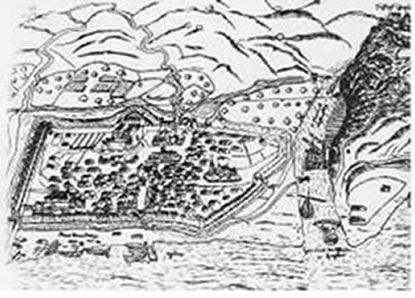 The oldest traces of human presence in today’s Rijeka area date back to the Palaeolithic and Neolithic periods, and the remnants of prehistoric castles (Solin above Martinšćica, Trsatski brijeg and Veli vrh – Gradišće above the Rječina River) to the Bronze and Iron Ages. Such settlement dominated over Rijeka’s Bay and protected the port as early as during the period of Illyrian (Liburnian) habitation.
The oldest traces of human presence in today’s Rijeka area date back to the Palaeolithic and Neolithic periods, and the remnants of prehistoric castles (Solin above Martinšćica, Trsatski brijeg and Veli vrh – Gradišće above the Rječina River) to the Bronze and Iron Ages. Such settlement dominated over Rijeka’s Bay and protected the port as early as during the period of Illyrian (Liburnian) habitation.
Though traces of Neolithic settlements can be found in the region, the earliest modern settlements on the site were Celtic Tarsatica (modern Rijeka Old Town, now part of Rijeka), and the tribe of mariners, the Liburni, in the natural harbour below. The city long retained its double character.
Of the ancient history of Fiume little or nothing has been preserved, all documents which might have tended to
clear up the subject having been burnt by the venetians, under Angelo Trevisano in 1509. This much is,
however, certain, that the Phoenicians first settled on our shores more than 3.000 years ago, and laid the
foundation of commerce with the Mediterranean. (George Louis Faber: Fiume and her New Port, Journal of the Society of Arts, November 9, 1877., str. 1030.)
The city finds its origin in the ancient roman town Tarsatica, which is presumed to be founded in 35 BC during the Reign of Ottaviano Augusto In the time of Augustus, the Romans rebuilt Tarsatica as a municipium on the right bank of the small river Rječina (whose name simply means "big river") as Flumen. Roman polihistor Pliny mentioned Tarsatica and comfirm their exsistance. In this time Tarsatica was probably already pre roman inhabited city-like. He called Tarsatika oppidum, what was usual name for fortified city. Historian A. Degrassi think that roman city described in Pliny handwriting was located at right bank of Rječina, on crossroads from Pola and Triest to Senia. City was destroyed by the barbarians invasions between the VI and VII century. At the beginning of the VII century, in the same area Flumen (Latin name) was reborn translated by the Croatians as  Reka, Rika or Rijeka.
Reka, Rika or Rijeka.
From the 5th century onwards, the town was ruled successively by the Ostrogoths, the Byzantines, the Lombards, the Franks, the Croats.
The development of Rijeka impelled the newly arrived Slavic settlers – the Croats – to conquer Tarsatica and start building a new settlement. The first original mention of the medieval settlement dates back to the first half of the 13th century when two settlements appear in historical sources: TRSAT, on the hill on the left bank of the Rječina River, on the site of the Liburnian settlement TARSATA on the site of the Roman TARSATIKA. Rijeka was a small, fortified town, crammed inside its walls protected by several defensive towers, divided into two parts: the upper part with a medieval castle and St. Vitus church (which is where the name "Flumen Sancti Viti" came from), and the lower residential, commercial and crafts settlement called Rika or Rijeka by its inhabitants.
In 1465 the city, also known as "Terra Sancti Viti" (lend of st. Vitus), ruled by the Devin noblemen, passes from the “signoria” government of the Frangipani’s family, then by the Walsee family and, before coming under the control of the Austrian Habsburgs in 1466. During that period Rijeka had around 3000 inhabitants.
After the 4th century the city was rededicated to St. Vitus, the city's patron saint, as Terra Fluminis sancti Sancti Viti or in German Sankt Veit am Pflaumb. In medieval times Rijeka got its Croatian name, Rika svetoga Vida (= the river of St. Vitus).
Medieval Rijeka was a city surrounded by a wall and was thus a feudal stronghold. The fort was in the center of the city, at its highest point. It was protected by massive walls against external enemies.
The dialect from Veneto, mainly that one spoken in the area surrounding Fiume (Italian name for Rijeka), was associated with the use of the Ciakavo Croatian dialect (municipally confirmed in 1876 for the public education and named “illirico”). In this kind of dialect many influences and words from the Veneto dialect were present.
Fiume has never been submitted to Venice. Venice only governed it briefly in 1508 after having destroyed it at least twice.
Under Habsburg suzerainty
The golden period of Rijeka’s commerce suddenly lost momentum in the second half of the 15th century. Frequent Ottoman attacks interrupted the traffic routes, as did the wars of the claimants for the Hungarian throne and the eternal conflicts between the Uskoci and the Venetians. The war began to pacify in the second half of the 17th century.
The considerable economic development began in the 16th century, owing to the iron, oil, wood, wool, cattle and leather trade. In the 16th century, the town even had a printing house which printed books in the Croatian - Glagolitic script. At the time, the settlement on the left bank of the Rječina River, under Trsat, did not exist (Sušak). It was not formed until the 18th century.
The arrival of the Jesuits in Rijeka and the foundation of their high school significantly improved education and cultural life, strengthening the Romanic influence to the detriment of the Croatian language and the Glagolitic script.
Rijeka's economy began gaining significant advantage in the 18th century. That is when Emperor Charles VI proclaimed Rijeka a free port, but the soon-to-be strengthened Hungary, as a part of the Habsburg Monarchy, began to see Rijeka as its exit into the world. At the turn of the 18th into the 19th century, Rijeka was first for a few years under French (Napoleon) and then once again under Austrian administration.
Created a free port in 1723, Rijeka during the 18th and 19th centuries was passed among the Habsburgs' Austrian, Croatian, and Hungarian possessions until being attached to Hungary for the third and last time in 1870. Although Croatia had constitutional autonomy within Hungary, the City of Rijeka was independent, governed directly from Budapest by an appointed governor, as Hungary's only international port. There was competition between Austria's Port of Trieste and Hungary's Port of Rijeka.
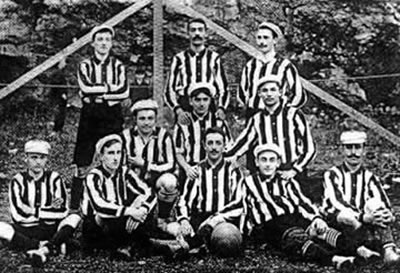 Major port development, the general expansion of international trade and the city's connection (1873) to the Hungarian and Austrian railway networks contributed to rapid population growth from only 21,000 in 1880 to 50,000 in 1910. A lot of major civic buildings went up at that time, including the Governor's Palace designed by the Hungarian architect Alajos Hauszmann. The future mayor of New York City, Fiorello La Guardia, lived in the city at the turn of the 20th century, and reportedly even played football for the local sports club "Club Atletico Fiumano"(On the left, photo with Fiorello La Guardia, later Mayor of NY city, when he was playing for Club Atletico Fiumano (second line, in the middle)). In May 26 1912. the future Hungarian head of state János Kádár was born in Rijeka.
Major port development, the general expansion of international trade and the city's connection (1873) to the Hungarian and Austrian railway networks contributed to rapid population growth from only 21,000 in 1880 to 50,000 in 1910. A lot of major civic buildings went up at that time, including the Governor's Palace designed by the Hungarian architect Alajos Hauszmann. The future mayor of New York City, Fiorello La Guardia, lived in the city at the turn of the 20th century, and reportedly even played football for the local sports club "Club Atletico Fiumano"(On the left, photo with Fiorello La Guardia, later Mayor of NY city, when he was playing for Club Atletico Fiumano (second line, in the middle)). In May 26 1912. the future Hungarian head of state János Kádár was born in Rijeka.
The political question was always very important. When Hungary took
Fiume over in 1868. it was almost entirely a Croat city. Of the 12,599 inhabitants
in 1851 11,908 had been Slavs and 691 Italians. The population increased
rapidly; in 1880 it was 20,981, in 1900 38,855, and in 1910 48,492. There was, of
course, a certain influx of Magyars, whose numbers rose from 367 in 1881 to
6,493 in 1910, most of this increase being due to immigration of officials and of
Magyarized Jewish merchants, although Magyarization may account for some
small part of it. There was also a small population of German and other nationalities.
What was also happening was, however, the steady rise of the Italian element at the
expense of the Croatian. The Croats, of course, inhabit the hinterland in solid
masses, and even in the suburb of Sušak (today part of Rijeka) they continued to form 85 per cent of the population. Nevertheless, in Fiume, according to the census
figures, they already constituted only 36 per cent of the population in 1880 and
in 1900 actually only 18 per cent. By 1910 the figure had risen again to
25 per cent (12,926). The Italians were estimated at 17,377 in 1900, and 24,212,
or almost exactly 50 per cent of the total, in 1910.
This remarkable change was due to the deliberate policy of Hungary, which
saw no danger in the Italian element, but a great danger in the Croat, and
therefore encouraged the former by every means at the expense of the latter.
Italians were induced to immigrate from the neighboring provinces, and were
naturalized. The administration was Italianized, and all signs, posters, and inscriptions ordered to be written in Italian. Croat, on the other hand, was
practically proscribed. In 1910 the 6,000 Magyars had 6 secondary schools, a professional schools, 2 elementary schools, and a
kindergartens; the 24,000 Italians had 2 secondary school, 2
professional schools, 12 elementary schools, and 9 kindergartens, while the
13,000 Slays had no schools or kindergartens whatsoever.
The decrease in the Croat and increase in the Italian element was not due to
immigration alone. For centuries prior to the modern age Italian was the language
of urban life, of trade, and of polite society along both shores of the Adriatic.
Many Slaves, on rising in the world, adopted Italian manners and speech. The greatest exponents of the "Italianita" of Fiume, as
of Trieste, have been and are to-day men of Croat origin. Incidentally, most of
the Croats of the coast are probably, by racial origin, Illyrians, whose ancestors
were first Romanced, then Slavized. The distinction between the two nationalities
is not easy to draw. In 1921 the leader of the Italian nationalist party bore the
purely Slavonic name of Bellasich, while the Autonomist leader (who after his
defeat took refuge in Yugoslav territory) was named Zanella, name with pure Italian origin.
For many decades the Magyar and Italian elements worked hand in hand,
making common cause against the Croats. Only in the last fifteen years or so
before the I War was an attempt made to Magyarize the city. Pressure was placed
on parents to send their children to Magyar schools. The efforts were not very whole-hearted, and their
intensity varied greatly according to the personality of the governor. In this
period, however, a certain Italian irredentist movement grew up, although it was
not strong, and was confined to the younger and more extreme elements.
Politically, in 1914, the Italian irredentist movement had gained hold of perhaps
15 per cent of the population.
The Italo-Yugoslav dispute and the Free State
 Before WW1 Italy was part of an alliance with Germany and Austria-Hungary, yet it didn't join them when the war started and it even joined the Allied side later during the war. Why did Italy do this? And if there were good reasons to join the Allies why did it ally itself with Germany and Austria in the first place? It is easy to explain why Italy didn't join the Germany: they had little to gain from them. Alliances are always only a theory and a country can refuse to be dragged into a conflict without any gain from it. And Italy was always looking for a gain not a friends. In May 4th, 1915, Italy had signed the secret Treaty of London (a secret pact between the Triple Entente and Italy, signed in London by the United Kingdom, France, Russia, and the Kingdom of Italy). According to the pact, Italy was to leave the Triple Alliance and join Triple Entente; Italy was to declare war against Germany and Austria-Hungary within a month. Assuming victory, the Triple Entente promised Italy the territorial gains at the end of the war. Britain had offered Italy large sections of territory in the Adriatic Sea region – Tyrol, Dalmatia and Istria (picture left, click for bigger picture). Such an offer was too tempting for Italy to refuse. Britain and France wanted Italy to join in on their side so that a new front could open up the south of the Western Front. The plan was to split still further the Central Powers so that its power on the Western and Eastern Fronts was weakened. The plan was logical. The part Italy had to play in it required military success. This was never forthcoming. Italians are always poor soldiers.
Before WW1 Italy was part of an alliance with Germany and Austria-Hungary, yet it didn't join them when the war started and it even joined the Allied side later during the war. Why did Italy do this? And if there were good reasons to join the Allies why did it ally itself with Germany and Austria in the first place? It is easy to explain why Italy didn't join the Germany: they had little to gain from them. Alliances are always only a theory and a country can refuse to be dragged into a conflict without any gain from it. And Italy was always looking for a gain not a friends. In May 4th, 1915, Italy had signed the secret Treaty of London (a secret pact between the Triple Entente and Italy, signed in London by the United Kingdom, France, Russia, and the Kingdom of Italy). According to the pact, Italy was to leave the Triple Alliance and join Triple Entente; Italy was to declare war against Germany and Austria-Hungary within a month. Assuming victory, the Triple Entente promised Italy the territorial gains at the end of the war. Britain had offered Italy large sections of territory in the Adriatic Sea region – Tyrol, Dalmatia and Istria (picture left, click for bigger picture). Such an offer was too tempting for Italy to refuse. Britain and France wanted Italy to join in on their side so that a new front could open up the south of the Western Front. The plan was to split still further the Central Powers so that its power on the Western and Eastern Fronts was weakened. The plan was logical. The part Italy had to play in it required military success. This was never forthcoming. Italians are always poor soldiers.
The attribution of Fiume to Italy after the War was the result of one of the strangest sequences of events which even crazy 1919 witnessed, and all started with that Treaty of London. Italy, at first, did not claim Fiume, which was intended to be the port of Croatia. Under the same Treaty, however, Italy was due to receive Dalmatia. At the Peace Conference American president Wilson refused to recognize the Treaty of London as binding on himself, and proposed to give Dalmatia to Yugoslavia, leaving Fiume as an international port within the Yugoslav customs régime. Italy stuck to her demand for Dalmatia, and Orlando now claimed also Fiume. It was over this question that the Italian Delegation left the Conference.
But let as start from beginning.
Habsburg-ruled Austria-Hungary's disintegration in the closing weeks of World War I in the fall of 1918. led to the establishment of rival Croatian and Italian administrations in the city; both Italy and the founders of the new Kingdom of the Serbs, Croats and Slovenes (later the Kingdom of Yugoslavia) claimed sovereignty based on their "irredentist" ("unredeemed") ethnic populations.
After a brief Italian occupation, an international force of French, British and American troops occupied the city (November 3 1918) while its future was discussed at the Paris Peace Conference during the course of 1919.
Italy based its claim on the fact that Italians were the largest single nationality within the city. Croats made up most of the remainder and were also a majority in the surrounding area, including the neighboring town of Sušak (today integral part of city of Rijeka). However, Italy's territorial claim to Rijeka/Fiume was rejected by the other major victors of World War I.
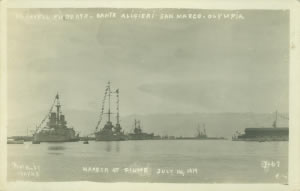 The struggle for control of Fiume's post war destiny began on October 23, 1918. The Croatian soldiers of the Austro-Hungarian garrison mutinied and took control of the city in the name of the South Slav Committee of Agram. The Austrians signed an armistice ten days later and the Hapsburg Empire collapsed. The Italians rushed to claim their spoils. On September 10, 1918, the Treaty of Saint-Germain was signed declaring the Austro-Hungarian monarchy dissolved. On November 4th 1918. an Italian Naval cruiser "RN Emanuele Filiberto" sailed into the Rijeka harbor. On picture right, 1919. part of Italian naval foces in port of Rijeka. Ships Emanuele Filiberto, Dante Alighieri, San Marco and Olympia
The struggle for control of Fiume's post war destiny began on October 23, 1918. The Croatian soldiers of the Austro-Hungarian garrison mutinied and took control of the city in the name of the South Slav Committee of Agram. The Austrians signed an armistice ten days later and the Hapsburg Empire collapsed. The Italians rushed to claim their spoils. On September 10, 1918, the Treaty of Saint-Germain was signed declaring the Austro-Hungarian monarchy dissolved. On November 4th 1918. an Italian Naval cruiser "RN Emanuele Filiberto" sailed into the Rijeka harbor. On picture right, 1919. part of Italian naval foces in port of Rijeka. Ships Emanuele Filiberto, Dante Alighieri, San Marco and Olympia
The Croats were forced to yield power over Fiume's civic affairs to the local Italian National Council. Allied reaction to the Italian coup was swift and negative. The French destroyer "Audace" entered the port on November 17th and landed a combined French, British and American task force. Administrationof Fiume was assumed by an Inter-Allied Control 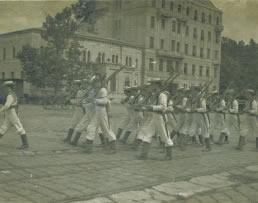 Commission pending resolution of the dispute by a peace conference.
Commission pending resolution of the dispute by a peace conference.
A council of Allied officers took control of the city's government and began occupation of the port city. In Versailles the following year debate raged over the fate of Fiume. The newly minted Kingdom of Yugoslavia, backed by the United States maintained that it should be a part of that country while Italy, citing a pre-war promise from Britain and France claimed the city. US president Wilson's principle of self-determination contained there was cited as the justification for the Italian stance. They noted that Fiume's 22,488 Italians outnumbered its 13,351 Croats. Picture left, american marines in Rijeka, Žabica square.
Italian premier Orlando's appeals to Wilson were rebuffed. The American president was a firm supporter of the new Kingdom of the Serbs, Croats and Slovenes (Yugoslavia). Yugoslavia's economic viability demanded access to the sea. And Fiume was the only port available.
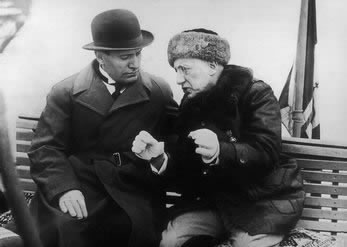 In September with the likelihood of Italy's wish not being granted, one man take the things in their own hands. Negotiations over the future of the city were interrupted two days later when a force of Italian nationalist irregulars led by the eccentric anarchist-fascist writer Gabriele d'Annunzio (on the picture right Benito Mussolini and Gabriele D'Annunzio) swarmed into the city with corps of three hundred blackshirted volunteers dubbed "Arditi" and ejected the small Allied garrison in a bloodless fight on September 12, 1919. seizing control of the city. The Inter-Allied Control Commission was forced to withdraw. D'Annunzio eventually established a state, the "Italian Regency of Carnaro". Calling himself "Il Duce", D’Annunzio, a celebrated writer of his day who had become something of a war hero in Italy while serving in the Italian Air Forces, was the forerunner of Hitler and Mussolini who later borrowed many of his ideas and tactics.
In September with the likelihood of Italy's wish not being granted, one man take the things in their own hands. Negotiations over the future of the city were interrupted two days later when a force of Italian nationalist irregulars led by the eccentric anarchist-fascist writer Gabriele d'Annunzio (on the picture right Benito Mussolini and Gabriele D'Annunzio) swarmed into the city with corps of three hundred blackshirted volunteers dubbed "Arditi" and ejected the small Allied garrison in a bloodless fight on September 12, 1919. seizing control of the city. The Inter-Allied Control Commission was forced to withdraw. D'Annunzio eventually established a state, the "Italian Regency of Carnaro". Calling himself "Il Duce", D’Annunzio, a celebrated writer of his day who had become something of a war hero in Italy while serving in the Italian Air Forces, was the forerunner of Hitler and Mussolini who later borrowed many of his ideas and tactics.
Italian government bowed to the will of its allies. It continued to call for a negotiated settlement. The Italian Regular Army, which stood aside when the Arditi marched into the town, was ordered to blockade Fiume. D'Annunzio, acting as "Commander of Fiume", declared the city, "a fortress under siege" and imposed martial law after Italy refused his embarrassing offer of taking over the city. Opponents of the Fiuman cause were threatened with execution.
The black shirted storm troopers branched out into piracy of the local waters to support the government.
In meantime, Italy and Yugoslavia continued to negotiate. The Treaty of Rapallo was signed on November 12, 1920. It created an independent Free State of Fiume and ceded Dalmatia (except for the city of Zara) to Yugoslavia.
D'Annunzio's response to Rapallo was swift. He seized the Yugoslav islands of Arbe and Veglia the very next day. A few weeks later, on December 3rd, 1920, deciding to strike first, D'Annunzio declared war on Italy. D'Annunzio's response was characteristically Italian, flamboyant and of doubtful judgment.
Italian liberal Premier Giovanni Giolitti finally had enough and sent an expeditionary corps under General Enrico Couiglia to oust the poet warrior and to seize the city. Giolitti ordered the battleship "Andrea Doria" to bombard Fiume's municipal Governor palace. He correctly reckoned that a few shells lobbed in the direction of D'Annunzio's headquarters would be enough to send the dictator packing. The Fiume war lasted from December 24 to 28, 1920 and entered Fascist folklore as, "the Christmas of Blood". December 28th, D'Annunzio quietly slipped out of the palace and then the city itself as Italian Marines landed and took control, ending Italio-Fiume War of 1920. He gave one last speech to his legion in January 1921 after it left the town disarmed.
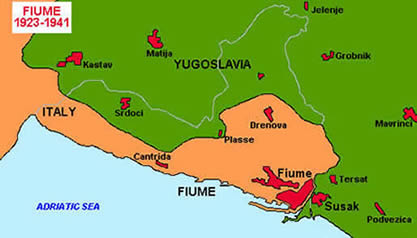 Victorious Italy proclaimed Fiume a part of Italy as Riječka država (Stato Libero di Fiume - Free state of Fiume) (picture right) due to this action made official with the Treaty of Rome on March 16, 1924, where Yugoslavia ceded its claim on the port in return for other concessions. Provisional government was headed by Riccardo Zanella. Fiume withdrew from Arbe and Veglia. The Fiumans approved the creation of the Free State and confirmed Zanella's government in an April 1921 election. Seven months later Italy herself fell under Fascist rule.
Victorious Italy proclaimed Fiume a part of Italy as Riječka država (Stato Libero di Fiume - Free state of Fiume) (picture right) due to this action made official with the Treaty of Rome on March 16, 1924, where Yugoslavia ceded its claim on the port in return for other concessions. Provisional government was headed by Riccardo Zanella. Fiume withdrew from Arbe and Veglia. The Fiumans approved the creation of the Free State and confirmed Zanella's government in an April 1921 election. Seven months later Italy herself fell under Fascist rule.
Mussolini finally marched on Rome and took control of the Italian government in March 1922. At the same time Fascists seized power in Fiume. Zanella fled to Yugoslavia where he established a Fiume Government in Exile.
Formal Italian annexation after Treaty of Rome (January 27, 1924) inaugurated twenty years of Fascist rule and a policy of forced Italianization of the Croatian population. Italian King Victorio 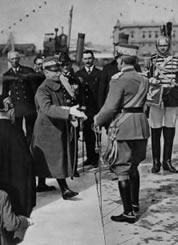 Emmanuelle III arrived in Fiume aboard the cruiser Brindisi on March 16, 1924 to formally proclaim the annexation (on the picture left, arrival of Vittorio Emanuele III, Re d'Italia, March 16, 1924).
Emmanuelle III arrived in Fiume aboard the cruiser Brindisi on March 16, 1924 to formally proclaim the annexation (on the picture left, arrival of Vittorio Emanuele III, Re d'Italia, March 16, 1924).
Fiume's importance to the larger world might have ended there but D'Annunzio's reign had inspired both the style and substance of the Fascism. It was D'Annunzio who first proposed a March on Rome to Mussolini. It was D'Annunzio's blackshirted Arditi who inspired the fashion for solid colors adopted by the various para-military legions during the interwar years. It was D'Annunzio's Arditi symbol of scull with two crossed bones that inspired German SS troops. It was D'Annunzio's Charter of Carnaro, (Carta del Carnaro in Italian, La reggenza Italiana del Carnaro, disegno di un nuovo ordinamento dello stato libero di Fiume, Download as EPUB or .docx), the constitution of the Italian Regency of Carnaro that gave rise to the corporate constitutions of Fascist regimes from Italy to Iberia and South America. It was coauthored by syndicalist Alceste De Ambris (he was a staunch opponent of Fascism, calling the movement "a filthy pawn") and combined anarchist, proto-fascist, and democratic republican ideas. Benito Mussolini was influenced by the Fascist portions of the constitution, and by D'Annunzio's style of leadership as a whole.
The Fiume episode, however, has long been blighted by the shadow of Fascism: D’Annunzio was considered to be a forerunner to the Fascist movement, and there are some elements of effective linguistic, rhetorical and cultural continuity between Fiume and Fascism (from “Me ne frego!” to "Giovinezza", to the spectacularization of politics, to the corporative structure of society), and lastly the fact that many exponents of the Fiume movement later joined Fascism (the Futurists in particular).
History is poetic as the Fiume was ceded to Yugoslavia by the Treaty of Paris in 1947 at the end of the second world war. The Italian population was evacuated and Fiume became the Yugoslav city of Rijeka.
After World War II
The city was occupied by the Germans after Italy withdrew from the Axis, again living their partners, Germany and Japan on dry. It remained in German hands for twenty months until the final days of the war when it was liberated by Yugoslav partisans at May 3 1945. During WWII the city was heavily damaged by a number of Allied air attacks. The harbour area was destroyed by the retreating Germans.
The aftermath of World War II saw the city's fate again resolved by a combination of force and diplomacy. This time, Yugoslav troops advanced (early May 1945) as far west as Trieste in their campaign against the German occupiers of both countries; once liberated of Germans, the city of Rijeka became Yugoslavian, a situation formalized by the Paris peace treaty between Italy and the wartime Allies on February 10, 1947. Once the change in sovereignty was formalized, 58,000 of the 66,000 Italian speakers left the city in advance of the Yugoslav army, and went into "exile" (esuli). The discrimination and persecution many of them experienced at the hands of the Yugoslav officials in the dying days of World War II and the first weeks of peace were, with good reason, a painful memory for them. Summary and brutal executions of fascists, Italian public servants and military officials convinced many Italians to abandon Rijeka.
Main sights
Korzo is the main street in Rijeka, with numerous shops and caffes, fully pedestrianised. On the Korzo is the City Tower (Gradski toranj in Croatian) and its four clocks which has been built over a period from the 16th to 19th centuries, with its general appearance stemming from the 18th century – the clocks are from 1784.
Tvornica "Torpedo" (the Torpedo factory) The first world prototypes of a self-propelled torpedo were created by Ivan Luppis, a retired naval engineer from Rijeka. The remains of this factory still exist, including a not so well-preserved launch ramp used for testing torpedoes on which in 1866 the first test vas done.
Svetište Majke Božje Trsatske (Sanctuary of Madonna Trsatiana) (Zvijezda mora, Kraljica Jadrana, zaštitnica putnika - Star of the sea, Queen of Adriatic, protector of the travelers). Built 135 meters above the sea on the Trsat hill 7 centuries ago, it represents the Guardian of Travelers, especially seamen, who used to bring offerings to her so she will guard them or help them in time of trouble or illness. Among other points of interest are the Gothic sculpture of (Gospa Slunjska) the Madonna of Slunj and works by the Baroque painter C. Tasce.
Stara vrata, Rimski luk (Old gate, Roman arch) At first it was thought that this was a Roman Triumphal Arch built by the Roman Emperor Claudius Gothicus II. but later it was discovered to be just a portal to Pretorij, the army command in late antiquity.
Church of St Vitus (Sveti Vid in Croatian) or Rijeka Cathedral, octagonal in shape, is from the 17th century and built on the site very close to site of an older church. St Vitus is the patron saint of Rijeka. Inside the church is a crucifix from the 13th century that, legend has it, was struck by a stone thrown by a chap called Petar Loncaric in 1296. after some back luck on the cards. The earth opened up and swallowed him whole, while the crucifix began to bleed.
Ivan Zajc National Theatre was built in 1885 to the design of Austrian architects Ferdinand Fellner and Hermann Helmer. Ivan Zajc was a prolific Croatian composer and conductor born in Rijeka, who worked at the theatre from 1855 to 1862.
INDUSTRY
The town of Rijeka is an important business, trade, industrial and cultural center in the western part of the Republic of Croatia.
It is located on the Adriatic, at a point where the sea has made its deepest incision into the European continent. Due to its natural and geopolitical characteristics the area is ideally situated for harbour and shipping center development. In addition to activities related to the sea, such as tourism, shipping industries, forwarding agencies, harbour activities and shipbuilding, Rijeka within its wide boundaries also boasts numerous other major industries; civil- mechanical- electro- engineering, oil and petro-chemical, timber and pulp all feature in Rijeka's business portfolio.
However, the largest part of economy is concentrated, apart from tourism, on export. There are business and trade connections with more than 80 countries throughout the world. Rijeka is the center of Primorje-Gorski Kotar County in Croatia. The city's economy largely depends on sea transport, shipbuilding (shipyards "3. Maj" and "Viktor Lenac") and tourism.
TRANSPORT
Rijeka began to evolve during the 13th century, however, the most significant development was from 1728 onwards, when the Caroline road towards Zagreb was built, and the construction of a railway link was completed. Being connected with the entire central Europe via Zagreb, Rijeka has become one of the leading harbours on the Mediterranean sea.
Rijeka is the largest port in Croatia. According to the Rijeka Port Authority, its total throughput cargo in 2006 was close to 11 million tons. The port of Rijeka has a long maritime history and has been utilized as a cargo transit port since ancient times, linking middle Europe with numerous countries throughout the world. The annual turnover is some 20 million tons of miscellaneous cargo.
The harbour has good communications with the hinterland and substantial working and warehousing capacity in the area of more than 1 500 000 m2, furnished with modern transport facilities.
Rijeka has efficient road transport connections to other parts of Croatia and neighboring countries. The A6 Zagreb-Rijeka motorway was completed in 2004; a shorter stretch connecting Rijeka with the Slovenian border, part of the A7 motorway, was completed that same year. Rijeka gains access to the A8/A9 Istrian Y expressway network by means of the Učka Tunnel. An intricate series of high-capacity bypass and connection roads has recently been under construction. The eastern half of this project was due to open on 15 July 2006, and the more complex western half is to open 2 years later.
Rijeka is difficult to get to by air; it has its own international airport, but this is located on the nearby island of Krk. Handling only 200,000 by 2010, the facility is more of a charter airport than a serious transport hub, although various scheduled airlines have begun to serve it.
Rijeka is well integrated into the Croatian railway network and critical international rail lines. A fully-electrified line connects Rijeka with Zagreb and beyond towards Koprivnica and the Hungarian border as part of the international 5b corridor. Rijeka is also connected to Trieste and Ljubljana by a separate electrified stretch that extends northwards from the city. A transport bill, to have been passed by the Croatian Parliament in July 2006, was to see the start of construction along the aforementioned 5b corridor of Croatia's first high-speed rail line, making possible speeds nearing 250 km/h. Construction on the new line was to start in 2007 and is slated to be completed by 2013. Higher speeds on this line will mean a trip from Rijeka to Zagreb will take about an hour, as opposed to the current two hours. Rijeka is well connected by direct train to Munich in Germany or Salzburg in Austria, and there are direct night trains running to Rijeka from these two cities.
Rijeka has good ferry connections with the surrounding islands and cities within Croatia, but no direct foreign connections. There are daily coastal routes to Zadar, Split, and onwards to Dubrovnik which has international connections. Pula offers more direct southward connections from northwestern Croatia.
TOURISM
City of Rijeka is known for its carnival festivities since the Middle Ages. Carnival customs of Rijeka are a particular blend of European middle-class carnivals, foremost Venetian and Austrian carnivals with elements of old Slavic folklore and mythology. Carnival events traditionally take place in squares and streets of the City regardless the weather conditions. Steeped in a hundred-year tradition, the International Carnival of Rijeka has recently become an acknowledged and impressive happening for the Town of Rijeka, its region and all of Croatia, attracting numerous individual masks, organized groups of masks, participants, spectators and the media. The traditional International Rijeka Carnival - the pride of the people of Rijeka - is one of the largest and most acknowledged carnivals in Europe, hosting more than a thousand masks and over 100 000 spectators (picture left).
Kvarner Bay where Rijeka is located and Istrian Riviera, with more than 50% of the entire tourist capacity of Croatia, represent the most developed parts of the country as far as tourism is concerned. This region has a long tradition in tourism, dating back to the 19th century. Its specific geo-topographical position ensures a very pleasant climate with hot summers and mild winters. The average annual temperature is some 14°C and the region enjoys more than 2100 hours of sunshine. The mild climate, beautiful scenery and hospitality contribute to the attractiveness of the region.
The extremely rugged coastline with numerous gentle bays is perfect for swimming and other aquatic activities. Naturally, there is a great demand for nautical tourism. In Kvarner, the Istrian Riviera and the associated islands there are some 16 marinas and numerous small ports with a total mooring area of 500 670 m2 being available. The capacity of the marinas alone is 4 800 aquatic moorings with a further 1700 dry docks.
Furthermore, facilities are accompanied and refreshed by cultural and social events such as concerts, music festivals, sports competitions, beauty contests and folk festivities comprising local folklore and specific gastronomic delights.
Rijeka hosts the Croatian National Theatre "Ivan pl. Zajc", first built in 1765, as well as the University of Rijeka, founded in 1973 but with roots dating back to 1632.
SPORTS
Being a coastal town Rijeka boasts a wide diversity of sporting activities. Aquatic sports include sailing regattas, internationally renown spear fishing contests, sub-aqua sea fishing competitions, swimming and water polo.
A mere 30 km from Rijeka the mountains offer opportunities for the hiking, mountaineering, hunting and coarse game fishing enthusiasts. During the winter months the mountains are covered with snow and provide suitable slopes for the amateur and professional skier alike.
The town itself has one professional football team and numerous other sporting clubs; basketball, handball, tennis, badminton and the local version of bowling called "Boćanje". Only few kilometers from Rijeka, and 20 minutes drive, north, on sport airfield, in an area known as Grobnik lays the Grobnik racing track. By 1990, 13 races for moto world championship took place and the last one on June 17, 1990 was held in Rijeka. Last big international race before brutal aggression on Croatia took place on May 12, 1991 and it was called Opatija Prix. But still today, on Grobnik field you will find a wonderful motorcycle track and fantastic grip. I know of no other track which also offers appropriate grip in the rain. You'll only find that in Rijeka! The racing circuit is very smooth to ride. It is just a 20 kilometers from the holiday resort of Opatija. The Grobnik circuit, knows how to welcome you. A gorgeous fast track with a great possibility to experiment different lines. An inviting place with a nice atmosphere, a perfect organization and a delightful hospitality.

